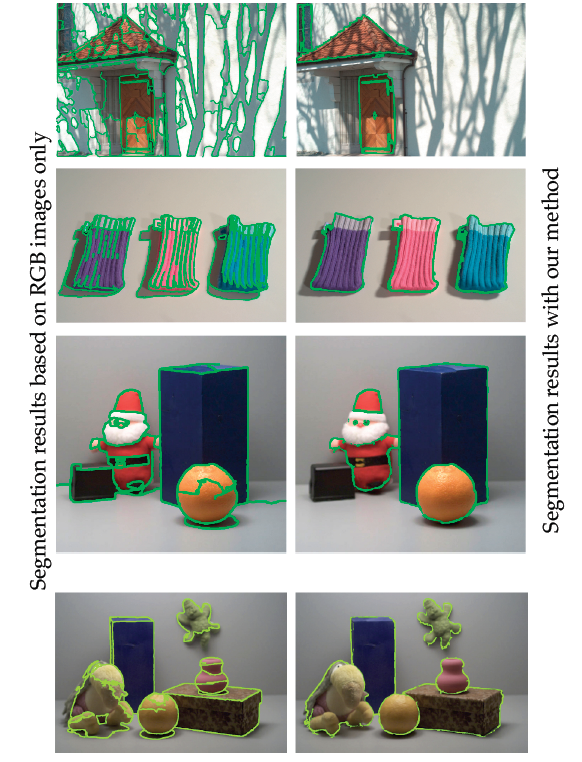Abstract
In this work, we propose a framework to incorporate NIR information into segmentation algorithms to better detect the material boundaries by first forming the intrinsic image and then by employing the material dependency properties of NIR images. One of the sources of mis-segmentation in image segmentation results is the presence of shadows. Based on the 4-sensor camera calibration model, which can potentially represent images invariant to shading and shadows, the information of the NIR channel is used along with R, G and B channels to form the intrinsic image. One of the preliminary goals in many computer vision tasks is to be able to segment the whole physical boundaries of an object in a scene, i.e., to determine where changes of material occur. The changes in color within an object confound many segmentation algorithms so that they assign different segments to parts of the object in different colors. However, color information mostly affect the visible part of the spectrum. Near-infrared (NIR) images, on the other hand, were shown to be largely dependent on the chemistry of the material and have no general correlation with the color information.

More information:
N. Salamati and S. Süsstrunk, Material-Based Object Segmentation Using Near-Infrared Information, IS&T/SID 18th Color Imaging Conference (CIC), pp. 196-201, 2010. [detailed record] [bibtex]
Reference:
[1] G.D. Finlayson, and M.S. Drew. 4-sensor camera calibration for image representation invariant to shading, shadows, lighting, and specularities. in Proc. of International Conf. on Computer Vision (ICCV) Vancouver, 2001.